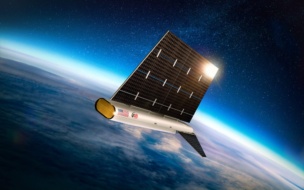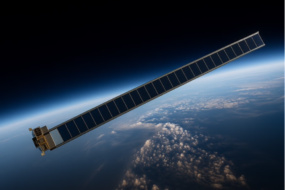After Starship tore back through the atmosphere following its fourth flight test, wreathed in plasma on its way to a soft(ish) landing in the Indian Ocean, Elon Musk said “a fully and immediately reusable orbital heat shield” is the “single toughest problem remaining” for the spacecraft.
Starship’s not the only big space project with thermal protection system (TPS) challenges: Companies such as Varda and Inversion are developing cargo reentry capsules that need to get the goods back to Earth unsinged, and the Orion space capsule at the center of the Artemis lunar program is grounded while engineers assess how its heat shield performed on a 2022 flight.
Hot business: All that interest is keeping things busy at NASA Ames’ Thermal Protection Branch, where dozens of NASA researchers develop and test these systems in collaboration with industry partners. The heat shielding on the Dragon capsule was developed there before being adapted by SpaceX.
A common approach for capsule return is using an ablator—a material that converts to carbon and sloughs off during intense heat conditions—but that requires more refurbishment. Starship has bigger aspirations.
“These commercial companies—they frequently want to minimize the refurbishment between flights; they want to minimize the inspection time—they really want aircraft-like operation,” Marc Rezin, an engineer at Ames, told Payload.
Starship enterprise: While Elon Musk’s early visions of Starship considered a novel approach to thermal protection called transpiration, which is almost analogous to a human sweating, it would have required some very complex design. Instead, the vehicle uses tiles based on those developed by NASA for the space shuttle, which are composite materials with a texture akin to styrofoam—great insulators, but relatively delicate.
Figuring out the correct coverage over complex geometries isn’t easy, as we saw when a control fin started coming apart in Starship’s last flight. “The Devil’s definitely in the details with these things and the transitions between pieces…or something that penetrates through the TPS, the interface between those is always an interesting design challenge,” Rezin says.
Chris Combs, a professor at the University of Texas at San Antonio whose research is centered on developing new ways to measure and test materials in hypersonic conditions, has been watching Starship with interest. He suspects more testing— plus potential adjustments to the vehicle’s flight path that would limit the use of its aerodynamic control surfaces in the harshest conditions—will help SpaceX engineers solve the problem.
Musk has said SpaceX is upgrading the tiles on the next vehicle in line for testing, and adding a layer of ablative material between the tiles and the vehicle to add extra margin.
“They’ll probably drive down to something relatively soon,” Combs says, adding a caveat that a lot rests on the definition of “rapid reusability.”
“How much time do you want to spend trying to make this rapidly reusable versus taking a design that’s fine, and you can reuse once every couple of months, but you can build 20 of them?”
The future’s so bright, we need to build better TPS: The challenge for spacecraft designers is that it is difficult to model the complex interactions between vehicles and the atmosphere at super-high temperatures. Combs’ lab uses a Mach 7 wind tunnel equipped with high-speed cameras and lasers to measure behavior of gas at high-speeds, all to better understand and model these applications.
“We don’t really have particularly good predictive models,” Combs says. “If you wanted to run a simulation of Starship’s [TPS]…we wouldn’t necessarily be able to answer with a ton of confidence.”
That’s part of the issue with Orion, which returned safely from orbit around the Moon, but lost more and larger pieces of its ablator heat shield than engineers expected before the flight. Now, they’re trying to figure out what happened—something Combs suspects may be linked to the way the heat shield was assembled from individual blocks.
At NASA Ames, where researchers are developing materials for everything from Earth reentry to a helicopter bound for Saturn, the next big thing is leveraging increasingly advanced computer simulations.
“We’re finding the computational material folks are engaged early and understanding where they can bring value early,” says Mairead Stackpoole, the chief of the thermal materials branch at Ames.
Combs and Rezin also point to advances in materials science that could unlock new capabilities, and the potential of more precise 3D printing to make theoretical materials a reality. And of course, there’s always a big balloon, like the LOFTID demo performed by ULA in 2022.
“It’s an exciting time right now on the commercial side, [and] we’re happy to be part of it,” Stackpoole said of her team’s consultations with space firms on thermal protection. “Probably half the branch, in one way or another, are supporting some commercials, and it’s not just the big ones, the SpaceX or the Blue Origin. There are just many, many others out there.”




